Latest recommendations

| Id | Title * | Authors * | Abstract * | Picture * | Thematic fields * ▲ | Recommender | Reviewers | Submission date | |
|---|---|---|---|---|---|---|---|---|---|
19 Jun 2020
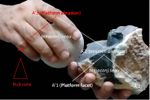
Platforms of Palaeolithic knappers reveal complex linguistic abilitiesCédric Gaucherel and Camille Noûs https://doi.org/10.31233/osf.io/wn5zaThe means of complexity in a lithic reduction sequenceRecommended by Marta Arzarello based on reviews by Antony Borel and 1 anonymous reviewer based on reviews by Antony Borel and 1 anonymous reviewer
The paper entitled “Platforms of Palaeolithic knappers reveal complex linguistic abilities” [1] submitted by C. Gaucherel and C. Noûs represents an interesting reflection about the possibilities to detect the human cognitive abilities in relation to the lithic production. The definition and the study of human cognitive abilities during the Lower Palaeolithic it has always been a complex field of investigation. The relation between the technical skills (lithic production) and the emergence of the linguistic abilities is not easy to investigate due to the difficulty of finding objective data to refer to. The proposition, made by C. Gaucherel and C. Noûs, of a formal grammar of knapping as a method to study the syntactical organisation of the reduction sequences, constitute a new and theoretical useful approach. In order to effectively and precisely define the gestures linked to a specific reduction sequence, for example that of the handaxes shaping, a very large number of variables should be taken into consideration (morphology and quality of the raw material, experience of the knapper, context, percussion technique, forecast of use of the handaxe, etc.). But since a simplification, that brings more elements than the classic one [2,3] is needed, the “action grammar approach” can be a good instrument to detect the common element in a shaping reduction sequence. Furthermore, one of the advantages of the proposed methodology lies in the fact that the definition of the different STs (Stone Technology) can be done according to the technological specific characteristics to be studied and to the type of instrument produced. The deconstruction of knapping sequences could help to detect the degree of complexity of the different steps of the reduction sequences also thanks to the identification of the sub-actions types. The increasing/decreasing of complexity is a very complicate concept in lithic technology. Since at the base of the lithic production there are two basic concepts (angle between the striking platform and the debitage surface - convexity of the debitage/façonnage surface) which are simply declined in an increasingly complex way, it is not easy to define uniquely in what exactly consists the increase in complexity. The approach proposed in the paper “Platforms of Palaeolithic knappers reveal complex linguistic abilities” can help to have new evidences, according to the identification of the required cognitive abilities. The proposed example of formal grammar still needs to be confirmed on archaeological collections, but it is probable that a practical application will allow to further develop the methodology and possibly to highlight additional possibilities of the approach. Bibliography [1] Gaucherel, C. and Noûs C. (2020). Platforms of Palaeolithic knappers reveal complex linguistic abilities. Paleorxiv, wn5za, ver. 6 peer-reviewed and recommended by PCI Archaeology. doi: 10.31233/osf.io/wn5za | Platforms of Palaeolithic knappers reveal complex linguistic abilities | Cédric Gaucherel and Camille Noûs | <p>Recent studies in cognitive neurosciences have postulated a possible link between manual praxis such as tool-making and human languages. If confirmed, such a link opens significant avenues towards the study of the evolution of natural languages... |  | Africa, Ancient Palaeolithic, Lithic technology, Theoretical archaeology | Marta Arzarello | 2020-04-30 14:18:26 | View | |
25 Jul 2023
Sorghum and finger millet cultivation during the Aksumite period: insights from ethnoarchaeological modelling and microbotanical analysisAbel Ruiz-Giralt, Alemseged Beldados, Stefano Biagetti, Francesca D’Agostini, A. Catherine D’Andrea, Yemane Meresa, Carla Lancelotti https://doi.org/10.5281/zenodo.7859673An innovative integration of ethnoarchaeological models with phytolith data to study histories of C4 crop cultivationRecommended by Emma Loftus based on reviews by Tanya Hattingh and 1 anonymous reviewerThis article “Sorghum and finger millet cultivation during the Aksumite period: insights from ethnoarchaeological modelling and microbotanical analysis”, submitted by Ruiz-Giralt and colleagues (2023a), presents an innovative attempt to address the lack of palaeobotanical data concerning ancient agricultural strategies in the northern Horn of Africa. In lieu of well-preserved macrobotanical remains, an especial problem for C4 crop species, these authors leverage microbotanical remains (phytoliths), in combination with ethnoarchaeologically-informed agroecology models to investigate finger millet and sorghum cultivation during the period of the Aksumite Kingdom (c. 50 BCE – 800 CE). Both finger millet and sorghum have played important roles in the subsistence of the Horn region, and throughout much of the rest of Africa and the world in the past. The importance of these drought-resistant and adaptable crops is likely to increase as we move into a warmer, drier world. Yet their histories of cultivation are still only approximately sketched due to a paucity of well-preserved remains from archaeological sites - for example, debate continues as to the precise centre of their domestication. Recent studies of phytoliths (by these and other authors) are demonstrating the likely continuous presence of these crops from the pre-Aksumite period. However, phytoliths are diagnostic only to broad taxonomic levels, and cannot be used to securely identify species. To supplement these observations, Ruiz-Giralt et al. deploy models (previously developed by this team: Ruiz-Giralt et al., 2023b) that incorporate environmental variables and ethnographic data on traditional agrosystems. They evaluate the feasibility of different agricultural regimes around the locations of numerous archaeological sites distributed across the highlands of northern Ethiopia and southern Eritrea. Their results indicate the general viability of finger millet and sorghum cultivation around archaeological settlements in the past, with various regions displaying greater-or-lesser suitability at different distances from the site itself. The models also highlight the likelihood of farmers utilising extensive-rainfed regimes, given low water and soil nutrient requirements for these crops. The authors discuss the results with respect to data on phytolith assemblages, particularly at the site of Ona Adi. They conclude that Aksumite agriculture very likely included the cultivation of finger millet and sorghum, as part of a broader system of rainfed cereal cultivation. Ruiz-Giralt et al. argue, and have demonstrated, that ethnoarchaeologically-informed models can be used to generate hypotheses to be evaluated against archaeological data. The integration of many diverse lines of information in this paper certainly enriches the discussion of agricultural possibilities in the past, and the use of a modelling framework helps to formalise the available hypotheses. However, they emphasise that modelling approaches cannot be pursued in lieu of rigorous archaeobotanical studies but only in tandem - a greater commitment to archaeobotanical sampling is required in the region if we are to fully detail the histories of these important crops. References Ruiz-Giralt, A., Beldados, A., Biagetti, S., D’Agostini, F., D’Andrea, A. C., Meresa, Y. and Lancelotti, C. (2023a). Sorghum and finger millet cultivation during the Aksumite period: insights from ethnoarchaeological modelling and microbotanical analysis. Zenodo, 7859673, ver. 3 peer-reviewed and recommended by Peer Community in Archaeology. https://doi.org/10.5281/zenodo.7859673 Ruiz-Giralt, A., Biagetti, S., Madella, M. and Lancelotti, C. (2023b). Small-scale farming in drylands: New models for resilient practices of millet and sorghum cultivation. PLoS ONE 18, e0268120. https://doi.org/10.1371/journal.pone.0268120
| Sorghum and finger millet cultivation during the Aksumite period: insights from ethnoarchaeological modelling and microbotanical analysis | Abel Ruiz-Giralt, Alemseged Beldados, Stefano Biagetti, Francesca D’Agostini, A. Catherine D’Andrea, Yemane Meresa, Carla Lancelotti | <p>For centuries, finger millet (<em>Eleusine coracana</em> Gaertn.) and sorghum (<em>Sorghum bicolor</em> (L.) Moench) have been two of the most economically important staple crops in the northern Horn of Africa. Nonetheless, their agricultural h... | Africa, Archaeobotany, Computational archaeology, Protohistory, Spatial analysis | Emma Loftus | 2023-04-29 16:24:54 | View | ||
17 Dec 2020
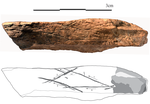
Experimentation preceding innovation in a MIS5 Pre-Still Bay layer from Diepkloof Rock Shelter (South Africa): emerging technologies and symbolsGuillaume Porraz, John E. Parkington, Patrick Schmidt, Gérald Bereiziat, Jean-Philip Brugal, Laure Dayet, Marina Igreja, Christopher E. Miller, Viola C. Schmid, Chantal Tribolo, Aurore Val, Christine Verna, Pierre-Jean Texier https://doi.org/10.32942/osf.io/ch53rExperimentation as a driving force for innovation in the Pre-Still Bay from Southern AfricaRecommended by Anne Delagnes based on reviews by Francesco d'Errico, Enza Elena Spinapolice and Kathryn RanhornThe article submitted by Guillaume Porraz et al. [1] shed light on the evolutionary changes recorded during the Pre-Still Bay Lynn stratigraphic unit (SU) from Diepkloof (Southern Africa). It promotes a multi-proxy and integrative approach based on a set of innovative behaviors, such as the engraving of geometric forms, silcrete heat- treatment, the use of adhesive, bladelet and bifacial tools production. This approach is not so common in Middle Stone Age (MSA) studies and makes a lot of sense for discussing the mechanisms that have fostered later innovations during the Still Bay and Howiesons Poort periods. The various innovations that emerge synchronously in this layer contrast with earlier innovations which appear as isolated phenomena in the MSA archaeological record. The strong inventiveness documented in Lynn SU is reported to a phase of experimentation for testing new ideas, new behaviors that would have played a crucial role for the emergence of the Still Bay in a context of socio-economic transformation. The data presented in this article broadens the scope of two previous articles [2-3] based on a more representative record, collected on an area of 3,5 m² opposed to 2 m² previously, and on the first presentation and description of an engraved bone with a rhomboid pattern. Macro- and microscopic analyses together with the analysis of the distribution of the engraved lines argue convincingly for an intentional engraving. This article constitutes a key contribution to the question of HOW emerged modern cultures in Southern Africa, while calling for further research related to sites’ function, environment and local resources to address the ever-debated question of WHY the MSA groups from Southern Africa developed such unprecedented inventiveness. It makes no doubt that this article deserves recommendation by PCI Archaeology. [1] Porraz, G., Schmidt, P., Bereiziat, G., Brugal, J.Ph., Dayet, L., Igreja, M., Miller, C.E., Viola, C., Tribolo, C., Val, A., Verna, C., Texier, P.J. 2020. Experimentation preceding innovation in a MIS5 Pre-Still Bay layer from Diepkloof Rock Shelter (South Africa): emerging technologies and symbols. 10.32942/osf.io/ch53r [2] Porraz, G., Texier, P.J., Archer, W., Piboule, M., Rigaud, J.P, Tribolo, C. 2013. Technological successions in the Middle Stone Age sequence of Diepkloof Rock Shelter, Western Cape, South Africa. Journal of Archaeological Science 40, 3376–3400. 10.1016/j.jas.2013.02.012 [3] Porraz, G., Texier, J.P. Miller, C.E., 2014. Le complexe bifacial Still Bay et ses modalités d’émergence à l’abri Diepkloof (Middle Stone Age, Afrique du Sud). In: XXVIIème Congrès Préhistorique de France, Transitions, Ruptures et Continuité en Préhistoire. Mémoires de la Société Préhistorique Française, 155–175. | Experimentation preceding innovation in a MIS5 Pre-Still Bay layer from Diepkloof Rock Shelter (South Africa): emerging technologies and symbols | Guillaume Porraz, John E. Parkington, Patrick Schmidt, Gérald Bereiziat, Jean-Philip Brugal, Laure Dayet, Marina Igreja, Christopher E. Miller, Viola C. Schmid, Chantal Tribolo, Aurore Val, Christine Verna, Pierre-Jean Texier | <p>In South Africa, key technologies and symbolic behaviors develop as early as the later Middle Stone Age in MIS5. These innovations arise independently in various places, contexts and forms, until their full expression during the Still Bay and t... |  | Africa, Lithic technology, Middle Palaeolithic, Symbolic behaviours | Anne Delagnes | 2020-08-04 09:13:27 | View | |
05 Jul 2023
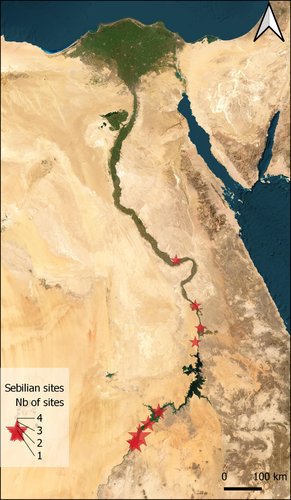
Tool types and the establishment of the Late Palaeolithic (Later Stone Age) cultural taxonomic system in the Nile ValleyAlice Leplongeon https://doi.org/10.5281/zenodo.8115202Cultural taxonomic systems and the Late Palaeolithic/Later Stone Age prehistory of the Nile Valley – a critical reviewRecommended by Felix Riede, Sébastien Plutniak and Shumon Tobias Hussain and Shumon Tobias Hussain based on reviews by Giuseppina Mutri and 1 anonymous reviewer based on reviews by Giuseppina Mutri and 1 anonymous reviewer
The paper entitled “Tool types and the establishment of the Late Palaeolithic (Later Stone Age) cultural taxonomic system in the Nile Valley” submitted by A. Leplongeon offers a review of the many cultural taxonomic in use for the prehistory – especially the Late Palaeolithic/Late Stone Age – of the Nile Valley (Leplongeon 2023). This paper was first developed for a special conference session convened at the EAA annual meeting in 2021 and is intended for an edited volume on the topic of typology and taxonomy in archaeology. Issues of cultural taxonomy have recently risen to the forefront of archaeological debate (Reynolds and Riede 2019; Ivanovaitė et al. 2020; Lyman 2021). Archaeological systematics, most notably typology, have roots in the research history of a particular region and period (e.g. Plutniak 2022); commonly, different scholars employ different and at times incommensurable systems, often leading to a lack of clarity and inter-regional interoperability. African prehistory is not exempt from this debate (e.g. Wilkins 2020) and, in fact, such a situation is perhaps nowhere more apparent than in the iconic Nile Valley. The Nile Valley is marked by a complex colonial history and long-standing archaeological interest from a range of national and international actors. It is also a vital corridor for understanding human dispersals out of and into Africa, and along the North African coastal zone. As Leplongeon usefully reviews, early researchers have, as elsewhere, proposed a variety of archaeological cultures, the legacies of which still weigh in on contemporary discussions. In the Nile Valley, these are the Kubbaniyan (23.5-19.3 ka cal. BP), the Halfan (24-19 ka cal. BP), the Qadan (20.2-12 ka cal BP), the Afian (16.8-14 ka cal. BP) and the Isnan (16.6-13.2 ka cal. BP) but their temporal and spatial signatures remain in part poorly constrained, or their epistemic status debated. Leplongeon’s critical and timely chronicle of this debate highlights in particular the vital contributions of the many female prehistorians who have worked in the region – Angela Close (e.g. 1978; 1977) and Maxine Kleindienst (e.g. 2006) to name just a few of the more recent ones – and whose earlier work had already addressed, if not even solved many of the pressing cultural taxonomic issues that beleaguer the Late Palaeolithic/Later Stone Age record of this region. Leplongeon and colleagues (Leplongeon et al. 2020; Mesfin et al. 2020) have contributed themselves substantially to new cultural taxonomic research in the wider region, showing how novel quantitative methods coupled with research-historical acumen can flag up and overcome the shortcomings of previous systematics. Yet, as Leplongeon also notes, the cultural taxonomic framework for the Nile Valley specifically has proven rather robust and does seem to serve its purpose as a broad chronological shorthand well. By the same token, she urges due caution when it comes to interpreting these lithic-based taxonomic units in terms of past social groups. Cultural systematics are essential for such interpretations, but age-old frameworks are often not fit for this purpose. New work by Leplongeon is likely to not only continue the long tradition of female prehistorians working in the Nile Valley but also provides an epistemologically and empirically more robust platform for understanding the social and ecological dynamics of Late Palaeolithic/Later Stone Age communities there.
Bibliography Close, Angela E. 1977. The Identification of Style in Lithic Artefacts from North East Africa. Mémoires de l’Institut d’Égypte 61. Cairo: Geological Survey of Egypt. Close, Angela E. 1978. “The Identification of Style in Lithic Artefacts.” World Archaeology 10 (2): 223–37. https://doi.org/10.1080/00438243.1978.9979732 Ivanovaitė, Livija, Serwatka, Kamil, Steven Hoggard, Christian, Sauer, Florian and Riede, Felix. 2020. “All These Fantastic Cultures? Research History and Regionalization in the Late Palaeolithic Tanged Point Cultures of Eastern Europe.” European Journal of Archaeology 23 (2): 162–85. https://doi.org/10.1017/eaa.2019.59 Kleindienst, M. R. 2006. “On Naming Things: Behavioral Changes in the Later Middle to Earlier Late Pleistocene, Viewed from the Eastern Sahara.” In Transitions Before the Transition. Evolution and Stability in the Middle Paleolithic and Middle Stone Age, edited by E. Hovers and Steven L. Kuhn, 13–28. New York, NY: Springer. Leplongeon, Alice. 2023. “Tool Types and the Establishment of the Late Palaeolithic (Later Stone Age) Cultural Taxonomic System in the Nile Valley.” https://doi.org/10.5281/zenodo.8115202 Leplongeon, Alice, Ménard, Clément, Bonhomme, Vincent and Bortolini, Eugenio. 2020. “Backed Pieces and Their Variability in the Later Stone Age of the Horn of Africa.” African Archaeological Review 37 (3): 437–68. https://doi.org/10.1007/s10437-020-09401-x Lyman, R. Lee. 2021. “On the Importance of Systematics to Archaeological Research: The Covariation of Typological Diversity and Morphological Disparity.” Journal of Paleolithic Archaeology 4 (1): 3. https://doi.org/10.1007/s41982-021-00077-6 Mesfin, Isis, Leplongeon, Alice, Pleurdeau, David, and Borel, Antony. 2020. “Using Morphometrics to Reappraise Old Collections: The Study Case of the Congo Basin Middle Stone Age Bifacial Industry.” Journal of Lithic Studies 7 (1): 1–38. https://doi.org/10.2218/jls.4329 Plutniak, Sébastien. 2022. “What Makes the Identity of a Scientific Method? A History of the ‘Structural and Analytical Typology’ in the Growth of Evolutionary and Digital Archaeology in Southwestern Europe (1950s–2000s).” Journal of Paleolithic Archaeology 5 (1): 10. https://doi.org/10.1007/s41982-022-00119-7 Reynolds, Natasha, and Riede, Felix. 2019. “House of Cards: Cultural Taxonomy and the Study of the European Upper Palaeolithic.” Antiquity 93 (371): 1350–58. https://doi.org/10.15184/aqy.2019.49 Wilkins, Jayne. 2020. “Is It Time to Retire NASTIES in Southern Africa? Moving Beyond the Culture-Historical Framework for Middle Stone Age Lithic Assemblage Variability.” Lithic Technology 45 (4): 295–307. https://doi.org/10.1080/01977261.2020.1802848 | Tool types and the establishment of the Late Palaeolithic (Later Stone Age) cultural taxonomic system in the Nile Valley | Alice Leplongeon | <p>Research on the prehistory of the Nile Valley has a long history dating back to the late 19th century. But it is only between the 1960s and 1980s, that numerous cultural entities were defined based on tool and core typologies; this habit stoppe... |  | Africa, Lithic technology, Upper Palaeolithic | Felix Riede | 2023-03-08 19:25:28 | View | |
16 May 2022
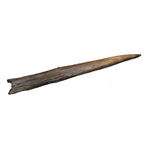
Wood technology: a Glossary and Code for analysis of archaeological wood from stone tool culturesAnnemieke Milks, Jens Lehmann, Utz Böhner, Dirk Leder, Tim Koddenberg, Michael Sietz, Matthias Vogel, Thomas Terberger https://osf.io/x8m4jOpen glossary for wood technologiesRecommended by Ruth Blasco based on reviews by Paloma Vidal-Matutano, Oriol López-Bultó, Eva Francesca Martellotta and Laura Caruso Fermé based on reviews by Paloma Vidal-Matutano, Oriol López-Bultó, Eva Francesca Martellotta and Laura Caruso Fermé
Wood is a widely available and versatile material, so it is not surprising that it has been a key resource throughout human history. However, it is more vulnerable to decomposition than other materials, and its direct use is only rarely recorded in prehistoric sites. Despite this, there are exceptions (e.g., [1-5] [6] and references therein), and indirect evidence of its use has been attested through use-wear analyses, residue analyses (e.g., [7]) and imprints on the ground (e.g., [8]). One interesting finding of note is that the technology required to make, for example, wooden spears was quite complex [9], leading some authors to propose that this type of tool production represented a cognitive leap for Pleistocene hominids [10]. Other researchers, however, have proposed that the production process for wooden tools could have been much easier than is currently thought [11]. Be that as it may, in recent years researchers have begun to approach wood remains systematically, developing analyses of natural and anthropogenic damage, often with the help of experimental reference samples. In this work, the authors elaborate a comprehensive glossary as a first step towards the understanding of the use of wood for technological purposes in different times and places, as there is still a general gap in the established nomenclature. Thus, this glossary is a synthesis and standardisation of analytical terms for early wood technologies that includes clear definitions and descriptions of traces from stone tool-using cultures, to avoid confusion in ongoing and future studies of wood tools. For this, the authors have carried out a detailed search of the current literature to select appropriate terms associated with additional readings that provide a wide, state-of-the-art description of the field of wood technology. An interesting point is that the glossary has been organised within a chaîne opératoire framework divided into categories including general terms and natural traces, and then complemented by an appendix of images. It is important to define the natural traces –understanding these as alterations caused by natural processes–because they can mask those modifications produced by other agents affecting both unmodified and modified wood before, during or after its human use. In short, the work carried out by Milks et al. [6] is an excellent and complete assessment and vital to the technological approach to wooden artifacts from archaeological contexts and establishing a common point for a standardised nomenclature. One of its particular strengths is that the glossary is a preprint that will remain open during the coming years, so that other researchers can continue to make suggestions and refinements to improve the definitions, terms and citations within it. [1] Oakley, K., Andrews, P., Keeley, L., Clark, J. (1977). A reappraisal of the Clacton spearpoint. Proceedings of the Prehistoric Society 43, 13-30. https://doi.org/10.1017/S0079497X00010343 [2] Thieme, H. (1997). Lower Palaeolithic hunting spears from Germany. Nature 385, 807-810. https://doi.org/10.1038/385807a0 [3] Schoch, W.H., Bigga, G., Böhner, U., Richter, P., Terberger, T. (2015). New insights on the wooden weapons from the Paleolithic site of Schöningen. Journal of Human Evolution 89, 214-225. https://doi.org/10.1016/j.jhevol.2015.08.004 [4] Aranguren, B., Revedin, A., Amico, N., Cavulli, F., Giachi, G., Grimaldi, S. et al. (2018). Wooden tools and fire technology in the early Neanderthal site of Poggetti Vecchi (Italy). Proceedings of the National Academy of Sciences. 115, 2054-2059. https://doi.org/10.1073/pnas.1716068115 [5] Rios-Garaizar, J., López-Bultó, O., Iriarte, E., Pérez-Garrido, C., Piqué, R., Aranburu, A., et al. (2018). A Middle Palaeolithic wooden digging stick from Aranbaltza III, Spain. PLoS ONE 13(3): e0195044. https://doi.org/10.1371/journal.pone.0195044 [6] Milks, A. G., Lehmann, J., Böhner, U., Leder, D., Koddenberg, T., Sietz, M., Vogel, M., Terberger, T. (2022). Wood technology: a Glossary and Code for analysis of archaeological wood from stone tool cultures. Peer-reviewed and recommended by PCI Archaeology https://doi.org/10.31219/osf.io/x8m4j [7] Nugent, S. (2006). Applying use-wear and residue analyses to digging sticks. Mem Qld Mus Cult Herit Ser 4, 89-105. https://search.informit.org/doi/10.3316/informit.890092331962439 [8] Allué, E., Cabanes, D., Solé, A., Sala, R. (2012). Hearth Functioning and Forest Resource Exploitation Based on the Archeobotanical Assemblage from Level J, in: i Roura E. (Ed.), High Resolution Archaeology and Neanderthal Behavior: Time and Space in Level J of Abric Romaní (Capellades, Spain). Springer Netherlands, Dordrecht, pp. 373-385. https://doi.org/10.1007/978-94-007-3922-2_9 [9] Ennos, A.R., Chan, T.L. (2016). "Fire hardening" spear wood does slightly harden it, but makes it much weaker and more brittle. Biology Letters 12. https://doi.org/10.1098/rsbl.2016.0174 [10] Haidle, M.N. (2009). How to think a simple spear?, in: de Beaune S.A., Coolidge F.L., Wynn T. (Eds.), Cognitive Archaeology and Human Evolution. Cambridge University Press, New York, pp. 57-73. [11] Garofoli, D. (2015). A Radical Embodied Approach to Lower Palaeolithic Spear-making. Journal of Mind and Behavior 36, 1-26. | Wood technology: a Glossary and Code for analysis of archaeological wood from stone tool cultures | Annemieke Milks, Jens Lehmann, Utz Böhner, Dirk Leder, Tim Koddenberg, Michael Sietz, Matthias Vogel, Thomas Terberger | <p>The analysis of wood technologies created by stone tool-using cultures remains underdeveloped relative to the study of lithic and bone technologies. In recent years archaeologists have begun to approach wood assemblages systematically, developi... |  | Ancient Palaeolithic, Archaeobotany, Mesolithic, Middle Palaeolithic, Neolithic, Raw materials, Taphonomy, Traceology, Upper Palaeolithic | Ruth Blasco | 2021-12-01 12:18:53 | View | |
20 Dec 2020
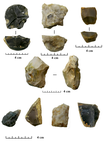
For our world without sound. The opportunistic debitage in the Italian context: a methodological evaluation of the lithic assemblages of Pirro Nord, Cà Belvedere di Montepoggiolo, Ciota Ciara cave and Riparo Tagliente.Marco Carpentieri, Marta Arzarello https://doi.org/10.31219/osf.io/2ptjbInvestigating the opportunistic debitage – an experimental approachRecommended by Alice Leplongeon based on reviews by David Hérisson and 1 anonymous reviewerThe paper “For our world without sound. The opportunistic debitage in the Italian context: a methodological evaluation of the lithic assemblages of Pirro Nord, Cà Belvedere di Montepoggiolo, Ciota Ciara cave and Riparo Tagliente” [1] submitted by M. Carpentieri and M. Arzarello is a welcome addition to a growing number of studies focusing on flaking methods showing little to no core preparation, e.g., [2–4]. These flaking methods are often overlooked or seen as ‘simple’, which, in a Middle Palaeolithic context, sometimes leads to a dichotomy of Levallois vs. non-Levallois debitage (e.g., see discussion in [2]). The authors address this topic by first providing a definition for ‘opportunistic debitage’, derived from the definition of the ‘Alternating Surfaces Debitage System’ (SSDA, [5]). At the core of the definition is the adaptation to the characteristics (e.g., natural convexities and quality) of the raw material. This is one main challenge in studying this type of debitage in a consistent way, as the opportunistic debitage leads to a wide range of core and flake morphologies, which have sometimes been interpreted as resulting from different technical behaviours, but which the authors argue are part of a same ‘methodological substratum’ [1]. This article aims to further characterise the ‘opportunistic debitage’. The study relies on four archaeological assemblages from Italy, ranging from the Lower to the Upper Pleistocene, in which the opportunistic debitage has been recognised. Based on the characteristics associated with the occurrence of the opportunistic debitage in these assemblages, an experimental replication of the opportunistic debitage using the same raw materials found at these sites was conducted, with the aim to gain new insights into the method. Results show that experimental flakes and cores are comparable to the ones identified as resulting from the opportunistic debitage in the archaeological assemblage, and further highlight the high versatility of the opportunistic method. One outcome of the experimental replication is that a higher flake productivity is noted in the opportunistic centripetal debitage, along with the occurrence of 'predetermined-like' products (such as déjeté points). This brings the authors to formulate the hypothesis that the opportunistic debitage may have had a role in the process that will eventually lead to the development of Levallois and Discoid technologies. How this articulates with for example current discussions on the origins of Levallois technologies (e.g., [6–8]) is an interesting research avenue. This study also touches upon the question of how the implementation of one knapping method may be influenced by the broader technological knowledge of the knapper(s) (e.g., in a context where Levallois methods were common vs a context where they were not). It makes the case for a renewed attention in lithic studies for flaking methods usually considered as less behaviourally significant. [1] Carpentieri M, Arzarello M. 2020. For our world without sound. The opportunistic debitage in the Italian context: a methodological evaluation of the lithic assemblages of Pirro Nord, Cà Belvedere di Montepoggiolo, Ciota Ciara cave and Riparo Tagliente. OSF Preprints, doi:10.31219/osf.io/2ptjb [2] Bourguignon L, Delagnes A, Meignen L. 2005. Systèmes de production lithique, gestion des outillages et territoires au Paléolithique moyen : où se trouve la complexité ? Editions APDCA, Antibes, pp. 75–86. Available: https://halshs.archives-ouvertes.fr/halshs-00447352 [3] Arzarello M, De Weyer L, Peretto C. 2016. The first European peopling and the Italian case: Peculiarities and “opportunism.” Quaternary International, 393: 41–50. doi:10.1016/j.quaint.2015.11.005 [4] Vaquero M, Romagnoli F. 2018. Searching for Lazy People: the Significance of Expedient Behavior in the Interpretation of Paleolithic Assemblages. J Archaeol Method Theory, 25: 334–367. doi:10.1007/s10816-017-9339-x [5] Forestier H. 1993. Le Clactonien : mise en application d’une nouvelle méthode de débitage s’inscrivant dans la variabilité des systèmes de production lithique du Paléolithique ancien. Paléo, 5: 53–82. doi:10.3406/pal.1993.1104 [6] Moncel M-H, Ashton N, Arzarello M, Fontana F, Lamotte A, Scott B, et al. 2020. Early Levallois core technology between Marine Isotope Stage 12 and 9 in Western Europe. Journal of Human Evolution, 139: 102735. doi:10.1016/j.jhevol.2019.102735 [7] White M, Ashton N, Scott B. 2010. The emergence, diversity and significance of the Mode 3 (prepared core) technologies. Elsevier. In: Ashton N, Lewis SG, Stringer CB, editors. The ancient human occupation of Britain. Elsevier. Amsterdam, pp. 53–66. [8] White M, Ashton N. 2003. Lower Palaeolithic Core Technology and the Origins of the Levallois Method in North‐Western Europe. Current Anthropology, 44: 598–609. doi:10.1086/377653 | For our world without sound. The opportunistic debitage in the Italian context: a methodological evaluation of the lithic assemblages of Pirro Nord, Cà Belvedere di Montepoggiolo, Ciota Ciara cave and Riparo Tagliente. | Marco Carpentieri, Marta Arzarello | <p>The opportunistic debitage, originally adapted from Forestier’s S.S.D.A. definition, is characterized by a strong adaptability to local raw material morphology and its physical characteristics and it is oriented towards flake production. Its mo... |  | Ancient Palaeolithic, Lithic technology, Middle Palaeolithic | Alice Leplongeon | 2020-07-23 14:26:04 | View | |
16 May 2024

A return to function as the basis of lithic classificationRadu Iovita https://doi.org/10.5281/zenodo.7734147Using insights from psychology and primatology to reconsider function in lithic typologiesRecommended by Sébastien Plutniak , Felix Riede and Shumon Tobias Hussain , Felix Riede and Shumon Tobias Hussain based on reviews by Vincent Delvigne and 1 anonymous reviewer based on reviews by Vincent Delvigne and 1 anonymous reviewer
The paper “A return to function as the basis of lithic classification” by Radu Iovita (2024) is a contribution to an upcoming volume on the role of typology and type-thinking in current archaeological theory and praxis edited by the PCI recommenders. In this context, the paper offers an in-depth discussion of several crucial dimensions of typological thinking in past and current lithic studies, namely:
Discussing and importantly re-articulating these concepts, Iovita ultimately aims at “establishing unified guiding principles for studying a technology that spans several million years and several different species whose brain capacities range from ca. 300–1400 cm³”. The notion that tool function should dictate classification is not new (e.g. Gebauer 1987). It is particularly noteworthy, however, that the paper engages carefully with various relevant contributions on the topic from non-Anglophone research traditions. First, its considering works on lithic typologies published in other languages, such as Russian (Sergei Semenov), French (Georges Laplace), and German (Joachim Hahn). Second, it takes up the ideas of two French techno-anthropologists, in particular:
Interestingly, Iovita grounds his argumentation on insights from primatology, psychology and the cognitive sciences, to the extent that they fuel discussion on archaeological concepts and methods. Results regarding the so-called “design stance” for example play a crucial role: coined by philosopher and cognitive scientist and philosopher Daniel Dennett (1942-2024), this notion encompasses the possible discrepancies between the designer’s intended purpose and the object's current functions. DIF, as discussed by Iovita, directly relates to this idea, illustrating how concepts from other sciences can fruitfully be injected into archaeological thinking. Lastly, readers should note the intellectual contents generated on PCI as part of the reviewing process of the paper itself: both the reviewers and the author have engaged in in-depth discussions on the idea of (tool) “function” and its contested relationship with form or typology, delineating and mapping different views on these key issues in lithic study which are worth reading on their own. ReferencesGebauer, A. B. (1987). Stylistic Analysis. A Critical Review of Concepts, Models, and Interpretations, Journal of Danish Archaeology, 6, p. 223–229. Geertz, C. (1975). Common Sense as a Cultural System, The Antioch Review, 33 (1), p. 5–26. Iovita, R. (2024). A return to function as the basis of lithic classification. Zenodo, 7734147, ver. 5 peer-reviewed and recommended by Peer Community in Archaeology. https://doi.org/10.5281/zenodo.7734147 Lévi-Strauss, C. (1962). La pensée sauvage. Paris: Plon. Lévi-Strauss, C. (2021). Wild Thought: A New Translation of “La Pensée sauvage”. Translated by Jeffrey Mehlman & John Leavitt. Chicago, Illinois: University of Chicago Press. Sigaut, F. (1991). “Un couteau ne sert pas à couper, mais en coupant. Structure, fonctionnement et fonction dans l'analyse des objets” in 25 Ans d'études technologiques en préhistoire : Bilan et perspectives, Juan-les-Pins: Éditions de l'association pour la promotion et la diffusion des connaissances archéologiques, p. 21-34. | A return to function as the basis of lithic classification | Radu Iovita | <p>Complex tool use is one of the defining characteristics of our species, and, because of the good preservation of stone tools (lithics), one of the few which can be studied on the evolutionary time scale. However, a quick look at the lithics lit... |  | Ancient Palaeolithic, Lithic technology, Theoretical archaeology, Traceology | Sébastien Plutniak | 2023-03-14 19:01:40 | View | |
29 Apr 2024

Study and enhancement of the heritage value of a fortified settlement along the Limes Arabicus. Umm ar-Rasas (Amman, Jordan) between remote sensing analysis, photogrammetry and laser scanner surveys.Di Palma Francesca, Gabrielli Roberto, Merola Pasquale, Miccoli Ilaria, Scardozzi Giuseppe https://doi.org/10.5281/zenodo.8306381Integrating remote sensing and photogrammetric approaches to studying a fortified settlement along the Limes Arabicus: Umm ar‐Rasas (Amman, Jordan).Recommended by Alessia Brucato based on reviews by Francesc C. Conesa, Giuseppe Ceraudo and 1 anonymous reviewerDi Palma et alii manuscript delves into applying remote sensing and photogrammetry methods to document and analyze the castrum at the Umm er-Rasas site in Jordan. This research aimed to map all the known archaeological evidence, detect new historical structures, and create a digital archive of the site's features for study and education purposes [1]. Their research has been organized into two phases. The first one consisted of a remote sensing survey and involved collecting historical and modern aerial and satellite imagery, such as: aerial photographs by Sir Marc Aurel Stein from 1939; panchromatic spy satellite images from the Cold War period (Corona KH-4B and Hexagon KH-9); high and very high resolution (HR and VHR) modern multispectral satellite images (Pléiades-1A and Pléiades Neo-4) [1]. This dataset was processed using the ENVI 4.4 software and applying multiple image-enhancing techniques (Pansharpening, RGB composite, data fusion, and Principal Component Analysis). Then, the resulting images were integrated into a QGIS project, allowing for visual analyses of the site's features and terrain. These investigations provided: · a broad overview of the site, · the discovery of a previously unknown archaeological feature (the northeastern dam), · a stage for targeted ground-level investigations [1]. The project's second phase was dedicated to intensive fieldwork operations, including pedestrian surveys, stratigraphic excavations, and photogrammetric recordings, such as: photographic reconstructions via Structure from Motion (SfM) and laser scanner sessions (using two FARO X330 HDR). In particular, the laser scanner data were processed with Reconstructor 4.4, which provided highly detailed 3D models for the QGIS database. These results were crucial in validating the information acquired during the first phase. Overall, the paper is well written, with clear objectives and a systematic presentation of the site [2,3,10,11], the research materials, and the study phases. The dataset was described in meticulous detail (especially the remote sensing sources and the laser scanner recordings). The methods implemented in this study are rigorously described [4,5,6,7,8,9] and show a high level of integration between aerial and field techniques. The results are neatly illustrated and fit into the current debates about the efficacy of remote sensing detection and multiscale approaches in archaeological research. In conclusion, this manuscript significantly contributes to archaeological research, unveiling new and exciting findings about the site of Umm er-Rasas. Its findings and methodologies warrant publication and further exploration. References: 1. Di Palma, F., Gabrielli, R., Merola, P., Miccoli, I. and Scardozzi, G. (2024). Study and enhancement of the heritage value of a fortified settlement along the Limes Arabicus. Umm ar-Rasas (Amman, Jordan) between remote sensing analysis, photogrammetry and laser scanner surveys. Zenodo, 8306381, ver. 3 peer-reviewed and recommended by Peer Community in Archaeology. https://doi.org/10.5281/zenodo.8306381 2. Abela J. and Acconci A. (1997), Umm al‐Rasas Kastron Mefa’a. Excavation Campaign 1997. Church of St. Paul: northern and southern flanks. Liber Annus, 47, 484‐488. 3. Bujard J. (2008), Kastron Mefaa, un bourg à l'époque byzantine: Travaux de la Mission archéologique de la Fondation Max van Berchem à Umm al‐Rasas, Jordanie (1988‐1997), PhD diss., University of Fribourg 2008. 4. Cozzolino M., Gabrielli R., Galatà P., Gentile V., Greco G., Scopinaro E. (2019), Combined use of 3D metric surveys and non‐invasive geophysical surveys at the stylite tower (Umm ar‐Rasas, Jordan), Annals of geophysics, 62, 3, 1‐9. http://dx.doi.org/10.4401/ag‐8060 5. Gabrielli R., Salvatori A., Lazzari A., Portarena D. (2016), Il sito di Umm ar‐Rasas – Kastron Mefaa – Giordania. Scavare documentare conservare, viaggio nella ricerca archeologica del CNR. Roma 2016, 236‐240. 6. Gabrielli R., Portarena D., Franceschinis M. (2017), Tecniche di documentazione dei tappeti musivi del sito archeologico di Umm al‐Rasas Kastron Mefaa (Giordania). Archeologia e calcolatori, 28 (1), 201‐218. https://doi.org/10.19282/AC.28.1.2017.12 7. Lasaponara R., Masini N. (2012 ed.), Satellite Remote Sensing: A New Tool for Archaeology, New York 2012. 8. Lasaponara R., Masini N. and Scardozzi G. (2007), Immagini satellitari ad alta risoluzione e ricerca archeologica: applicazioni e casi di studio con riprese pancromatiche e multispettrali di QuickBird. Archeologia e Calcolatori, 18 (2), 187‐227. https://core.ac.uk/download/pdf/33150351.pdf 9. Lasaponara R., Masini N., Scardozzi G. (2010), Elaborazioni di immagini satellitari ad alta risoluzione e ricognizione archeologica per la conoscenza degli insediamenti rurali del territorio di Hierapolis di Frigia (Turchia). Il dialogo dei Saperi – Metodologie integrate per i Beni Culturali, Edizioni scientifiche italiane, 479‐494. 10. Piccirillo M., Abela J. and Pappalardo C. (2007), Umm al‐Rasas ‐ campagna 2007. Rapporto di scavo. Liber Annus, 57, 660‐668. 11. Poidebard A. (1934), La trace de Rome dans le désert de Syrie : le limes de Trajan à la conquête arabe ; recherches aériennes 1925 – 1932. Paris : Geuthner. | Study and enhancement of the heritage value of a fortified settlement along the Limes Arabicus. Umm ar-Rasas (Amman, Jordan) between remote sensing analysis, photogrammetry and laser scanner surveys. | Di Palma Francesca, Gabrielli Roberto, Merola Pasquale, Miccoli Ilaria, Scardozzi Giuseppe | <p>The Limes Arabicus is an excellent laboratory for experimenting with the huge potential of historical remote sensing data for identifying and mapping fortified centres along this sector of the eastern frontier of the Roman Empire and then the B... |  | Antiquity, Asia, Classic, Landscape archaeology, Mediterranean, Remote sensing, Spatial analysis | Alessia Brucato | 2023-08-31 23:34:16 | View | |
15 Aug 2021
Ran-thok and Ling-chhom: indigenous grinding stones of Shertukpen tribes of Arunachal Pradesh, IndiaNorbu Jamchu Thongdok, Gibji Nimasow & Oyi Dai Nimasow https://doi.org/10.5281/zenodo.5118675An insight into traditional method of food production in IndiaRecommended by Otis Crandell based on reviews by Antony Borel, Atefeh Shekofteh, Andrea Squitieri, Birgül Ögüt, Atefe Shekofte and 1 anonymous reviewerThis paper [1] covers an interesting topic in that it presents through ethnography an insight into a traditional method of food production which is gradually declining in use. In addition to preserving traditional knowledge, the ethnographic study of grinding stones has the potential for showing how similar tools may have been used by people in the past, particularly from the same geographic region. [1] Thongdok Norbu J., Nimasow Gibji, Nimasow Oyi D. (2021) Ran-thok and Ling-chhom: indigenous grinding stones of Shertukpen tribes of Arunachal Pradesh, India. Zenodo, 5118675, ver. 4 peer-reviewed and recommended by PCI Archaeo. doi: https://doi.org/10.5281/zenodo.5118675 | Ran-thok and Ling-chhom: indigenous grinding stones of Shertukpen tribes of Arunachal Pradesh, India | Norbu Jamchu Thongdok, Gibji Nimasow & Oyi Dai Nimasow | <p style="text-align: justify;">The Shertukpens are an Indigenous tribal group inhabiting the western and southern parts of Arunachal Pradesh, Northeast India. They are accomplished carvers of carving wood and stone. The paper aims to document the... | Antiquity, Asia, Environmental archaeology, Lithic technology, Peopling, Raw materials | Otis Crandell | 2021-02-10 10:26:12 | View | ||
04 Jul 2024
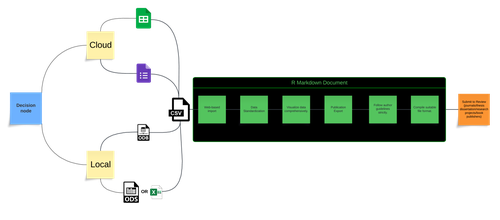
An approach to establishing a workflow pipeline for synergistic analysis of osteological and biochemical data. The case study of Amvrakia in the context of Corinthian colonisation between 625-189 BC in Epirus, Greece.Kiriakos Xanthopoulos, Angeliki Georgiadou, Christina Papageorgopoulou https://doi.org/10.5281/zenodo.8298579Establishing a workflow for recording and analysing bioarchaeological dataRecommended by Christianne Fernee based on reviews by 2 anonymous reviewersThe paper by Xanthopoulos and colleagues [1] presents an approach to establish a pipeline for the analysis of osteological and biochemical data. This approach integrates novel data collection, FAIR principles for data longevity and accessibility, utilises R markdown and cloud webware. Following the changes recommended by the reviewers this paper presents a welcome contribution to osteoarcheology and bioarchaeology. Osteoarchaeology and bioarchaeology often involves the collection of vast amounts of data both in the field and from consequential analysis in the lab. From this data we can reconstruct many aspects of past human experiences. However, issues often arise when bringing together these diverse types of data. In this regard, this paper proposes are useful methodology in which osteoarchaeological researchers can bring their data together as part of a streamlined process, from data collection to analyses.
References [1] Xanthopoulos, K., Georgiadou, A. and Papageorgopoulou, C. (2024). An approach to establishing a workflow pipeline for synergistic analysis of osteological and biochemical data. The case study of Amvrakia in the context of Corinthian colonisation between 625-189 BC in Epirus, Greece. Zenodo, 11156506, ver. 3 peer-reviewed and recommended by Peer Community in Archaeology. https://doi.org/10.5281/zenodo.8298579 | An approach to establishing a workflow pipeline for synergistic analysis of osteological and biochemical data. The case study of Amvrakia in the context of Corinthian colonisation between 625-189 BC in Epirus, Greece. | Kiriakos Xanthopoulos, Angeliki Georgiadou, Christina Papageorgopoulou | <p>Bioarchaeology has long focused on understanding past human life through skeletal remains, including oral pathology and stable isotope analysis. Despite advancements in statistical analysis, correlations are still largely made manually. To stre... |  | Antiquity, Bioarchaeology, Computational archaeology, Conservation/Museum studies, Mediterranean, Physical anthropology | Christianne Fernee | 2023-08-30 14:01:44 | View |
MANAGING BOARD
Alain Queffelec
Marta Arzarello
Ruth Blasco
Otis Crandell
Luc Doyon
Sian Halcrow
Emma Karoune
Aitor Ruiz-Redondo
Philip Van Peer










